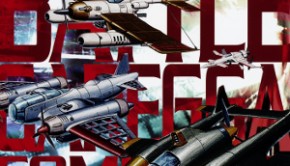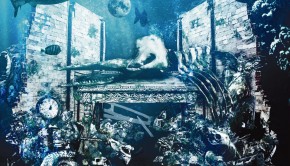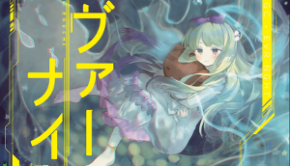Caving in to the Beats and Bullets
When I first heard of shooter developer Cave due to several messageboard discussions, I couldn’t help but wonder whether their soundtracks were truly great or whether they were cited for the sake of their obscurity. Experienced with the phenomenon of game music fans listening to just about anything non-mainstream to prove their knowledge and faced with titles like DoDonPachi Dai-Ou-Jou, Mushihimesama, and Ketsui – Kizuna Jigoku Tachi, can you really blame my cynicism? Nevertheless, Cave’s soundtracks have proved time after time to be a genuine sensation, famous for selling out within days of release and often receiving rave reviews. I eventually caved in too and enjoyed acquainting myself with a range of their soundtracks.
Looking back at Cave’s early works, it’s difficult to imagine just how successful their soundtracks would become. The developer struggled to find a unique musical identity for itself exploring a variety of styles by hiring different composers. DonPachi, DoDonPachi II, and Progear respectively emulated militaristic, techno, and grunge music, but came across as amateurish and superficial efforts. They nevertheless produced some fantastic soundtracks even if they didn’t find a safe ground. DoDonPachi‘s guitar-led rock was captivating but unoriginal, Guwange‘s oriental electronica flavour was appropriate for its Asian setting, and Dangun Feveron‘s addictive homage to 70s Disco was all about novelty value.
It wasn’t until 2002’s DoDonPachi Dai-Ou-Jou that Cave secured itself with a consistent composer and a distinctive style. They hired Basiscape’s electronic whiz Manabu Namiki, previously acclaimed for hisBattle Garegga and Bloody Roar scores by Eighting / Raizing. He created a dazzling electronic score featuring unforgettable stage themes with complex melodies, pumping basslines, and breathtaking decorations. It was technologically accomplished, appropriate for the agonising game, and mesmerising on a stand-alone basis. Unsurprisingly, Namiki returned to score its urban follow-up Ketsui and quickly became synonymous with the company’s music.
While continuing to integrate complex electronica in subsequent scores, Cave has retained its characteristic diversity. For example, the ESPGaluda series provides a tour through Trance music, the Mushihimesama series features a buoyant blend of oriental and electronic influences, and the more recent Pink Sweets Ibara and Muchi Muchi Pork! are humorous and childish. There have also been successful dabblings outside electronic music such as the hard rock score Ibara or the gothic fusion soundtrack to their latest hit Death Smiles. A large internal sound team led by Daisuke Matsumoto have shared compositional duties on Cave’s more recent projects. However, Manabu Namiki is still their greatest star.
Cave is known for offering especially exuberant soundtrack releases. They usually get the fundamentals right — releasing albums featuring complete and properly looped soundtracks, gorgeous covers and art, and booklets full of information. They’re also famous for providing value for money with their double soundtrack releases, image songs, and supplementary voice and sound effects collection. Bonus arranged tracks are also a mainstay of Cave releases and DoDonPachi Dai-Ou-Jou, ESPGaluda, ESPGaluda II, and Pink Sweets Ibara have even been honoured with complete arranged versions of their soundtracks by various electronic masterminds. Also notable are three CD-DVD sets published by INH featuring soundtracks, arranged music, and gameplay footage.
Cave is one of Japan’s most significant current shooter developers and their uniquely styled soundtracks are acclaimed best-sellers. While their soundtracks are not intended for all, they will be enjoyed by anyone who appreciates complex electronic music and fantastic melodies. With the masterpiece soundtrack to Death Smiles just released and the eagerly anticipated DoDonPachi Dai Fukkatsu just months away, it’s a great time to start exploring their music.
Posted on February 1, 2008 by Chris Greening. Last modified on February 27, 2014.














